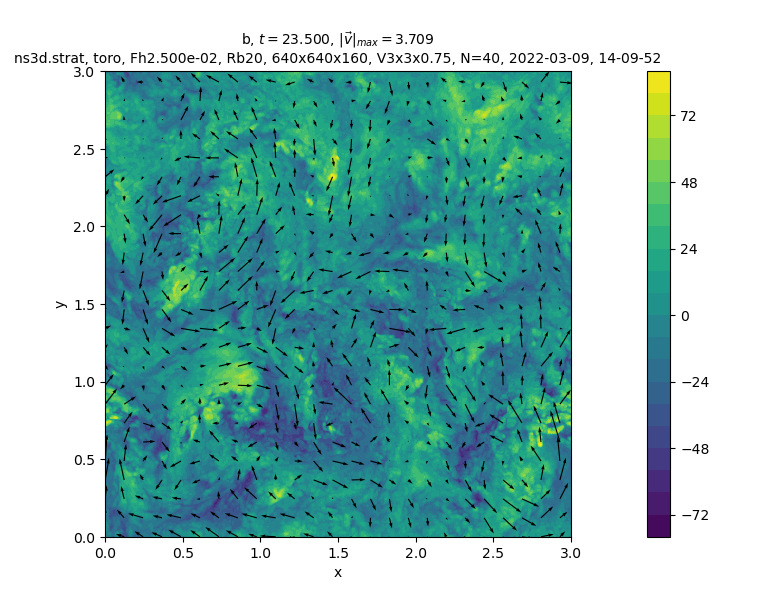Supervisor :
Pierre Augier (équipe MEIGE)
Contact :
pierre.augier@univ-grenoble-alpes.fr
Lab :
LEGI Grenoble
Date :
2 months starting in the Spring of 2022
Key Words :
numerical; density stratification; turbulence; spatio-temporal spectra
Context :
Strongly stratified turbulence is a dynamical regime that could play a key role in the atmosphere and the oceans. It can be observed for flows strongly influenced by a stable density stratification at very large Reynolds number. It is associated with an anisotropic downscale energy cascade. The most standard way to produce this regime in numerical simulations is to inject energy in vortical modes (associated with vertical vorticity). Spatio-temporal spectra have been used to study the dynamics of stratified flows forced in wavy modes, for which internal waves can dominate the flow leading to wave turbulence. However, these tools have not yet been seriously applied to more standard strongly stratified turbulence.
Project :
At LEGI, we develop and use the Computational Fluid Dynamics (CFD) framework Fluidsim. We now have a very good numerical setup to produce and study stratified turbulence forced in wavy or vortical modes (fluidsim.util.scripts.turb_trandom_anisotropic). In particular, computing and plotting temporal and spatio-temporal spectra is now very easy. Turbulence forced in wavy modes is investigated in a collaboration with Giorgio Krstulovic and Vincent Labarre (Observatoire de la Côte d'Azur). We propose to focus during this internship on the case with vortical forcing. Does strongly stratified turbulence lead to temporal spectra similar to the one observed in geophysical fluids? The student would have the opportunity to run simulations on a national cluster and to enjoy the power of Fluidsim and of the scientific Python ecosystem.
 Horizontal cross-section of buoyancy for strongly stratified turbulence forced
by large vortices at moderate buoyancy Reynolds number (resolution:
640x640x160).
Horizontal cross-section of buoyancy for strongly stratified turbulence forced
by large vortices at moderate buoyancy Reynolds number (resolution:
640x640x160).